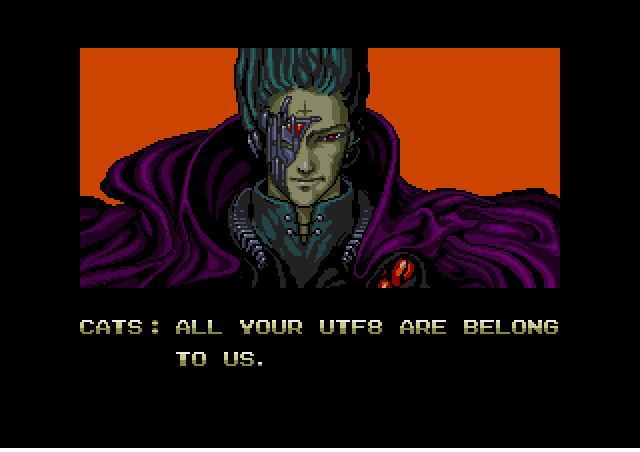Zero-EPWING
Zero-EPWING is a tool built to export easy to process JSON formatted UTF-8 data from dictionaries in EPWING format. This is a terrible format for many reasons, some of which are outlined below:
- It is based on a closed and undocumented standard.
- Not well supported as it isn't used anywhere else in the world.
- The only library for parsing this format,
libeb, is abandoned. - Data is stored in an inconsistent manner, with lots of duplication.
- Text data is represented using the annoying EUC-JP encoding.
- Characters which cannot be encoded are represented by image bitmaps.
Most applications that parse EPWING data traditionally use libeb to perform dictionary searches in place; dealing with
quirks in the format and libeb output is just part of the process. Zero-EPWING takes a different approach -- extract
all the data and output it an sane intermediate format, like JSON. As everyone knows how to parse JSON, it is trivial to
take this intermediate data and store it in a reasonable, industry standard representation.
Requirements
Building
The instructions below are for building on Linux, Mac OS X, and Windows, provided your environment is already configured for development:
- Clone the
https://github.com/FooSoft/zero-epwingrepository. - Initialize (
git submodule init) and update (git submodule update) the project submodules. - Switch to the
ebdirectory and execute./configure --disable-shared --disable-ebnet --disable-nls. - While still in the
ebdirectory, build the modified library by executingmake. - Switch to the
janssondirectory then executecmake .andmake. - From the project root directory, execute
cmake .andmake.
Usage
Zero-EPWING takes a single parameter, the directory of the EPWING dictionary to dump. It also supports the following optional flags:
--pretty(-p): output pretty-printed JSON (useful for debugging).--markup(-m): markup the output with as much metadata as possible.--positions(-s): output page and offset data for each entry.
Upon loading and processing the provided EPWING data, Zero-EPWING will output a UTF-8 encoded JSON file to stdout.
Information about errors will be printed to stderr; serious errors will result in this application returning a
non-zero exit code. A sample of the JSON data output is pretty-printed below for reference:
{
"charCode": "jisx0208",
"discCode": "epwing",
"subbooks": [
{
"title": "大辞泉",
"copyright": "CD-ROM版大辞泉 1997年4月10日 第1版発行\n\n監 修 松村 明\n発行者 鈴木俊彦\n発行所...
"entries": [
{
"heading": "亜",
"text": "亜\n[音]ア\n[訓]つ‐ぐ\n[部首]二\n[総画数]7\n[コード]区点...
},
{
"heading": "あ",
"text": "あ\n{{w_50275}}\n{{w_50035}}五十音図ア行の第一音。五母音の一。後舌の開母音...
},
...
You may have noticed the unusual-looking double curly bracket markers (such as {{w_50035}}). Remember what I mentioned
about certain characters being represented by image files? There are two graphical fonts in each dictionary, narrow and
wide. Whenever a character cannot be encoded as text, a glyph is used in its place. These font indices cannot be
converted directly to characters, differ from one dictionary to another, and short of performing OCR, you must build
tables to map these font indices to Unicode characters yourself. Zero-EWPING has no means to map these font glyphs to
Unicode by itself, and instead places inline markers in the form of {{w_xxxx}} and {{n_xxxx}} in the output,
specifying the referenced indices of the wide or narrow fonts respectively. The font glyphs can be dumped with the
ebfont sample application distributed with libeb, making the creation of these mappings tedious but possible.
License
MIT
